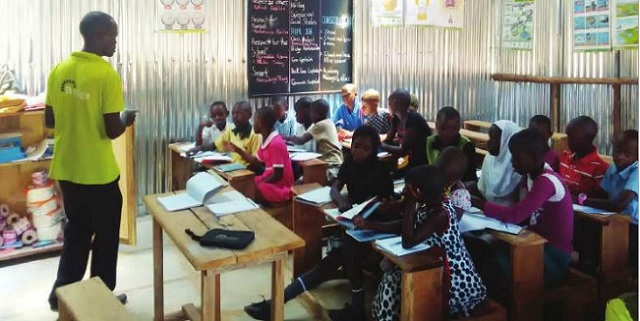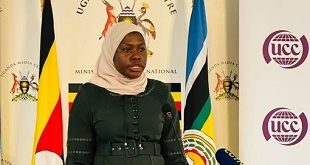
Kampala, Uganda | THE INDEPENDENT | Children in Bridge Schools receive 53% more learning over the course of their pre-primary and primary school career, according to the latest study.
Launched by the Nobel Prize-winning economist, Professor Michael Kremer, to Heads of State and national Education Ministers at the Education World Forum, the world’s largest gathering of education and skills ministers, hosted by the UK Government in London, the study found that after two years, Bridge Schools pupils are nearly a whole additional year of learning ahead of children taught using standard methods.
For pre-primary pupils, children gain nearly an additional year and half of learning, which translates to two years what children in other schools learn in three and a half years.
The study also found that pupils in Grade 1, which is equivalent to Primary 1, were more than three times as likely to be able to read as their peers in other schools.
The World Bank estimates that 90% of 10-year-olds in Sub Saharan Africa do not reach this benchmark.
In addition, pupils starting from the lowest learning levels gained the most, with girls making the same leap in learning as boys.
“In academic terms, Bridge Schools model increased learning by 1.35 standard deviations for pre-primary pupils and 0.81 standard deviations for primary pupils,” the study noted.
“To put these into context, these effect sizes far exceed the 99th percentile and represent learning gains in the top 1% among large, rigorous studies in the continent.”
Bridge Schools have educated over a million pupils in Africa since they opened their first school in Nairobi, Kenya.
Equally in Uganda, pupils from Bridge Schools have performed exceptionally well in the Primary Leaving Examination for four years in a row. For instance, in the 2020 PLE, Judith Batamuriza from Bridge School Yesu Amala in Nansana municipality was the top performing pupil.
She scored a division 1 with an aggregate of 8 points. Judith was grateful for the support she received from her teachers and attributes her great performance to great teaching.
“I wasn’t performing well in my previous school. But when I joined Bridge, my performance started improving. Thanks to my teachers and parents for making this happen,” she said then affirming the scientific learning and teaching model used by Bridge Schools.
The two-year study is the result of a large-scale randomized control trial (RCT), including more than 10,000 children from Bridge schools in Kenya.
Professor Kremer said: “The effects in this study are among the largest in the international education literature, particularly for a programme that was already operating at scale.
This study shows that attending schools delivering highly standardized education has the potential to produce dramatic learning gains at scale, suggesting that policymakers may wish to explore incorporation of standardization, including standardized lesson plans and teacher feedback and monitoring, in their own systems.”
John Aluba, the Bridge Schools Uganda Director said, “Improving education outcomes for our children is one of the most important challenges of our time. We are delighted that this study, by a Nobel Prize winning economist, has found unequivocal evidence of learning gains in our schools, among the largest gains seen in Africa. It is a testament to the holistic and integrated teaching and learning approaches that Bridge has pioneered.”
Bridge Schools Uganda works closely with the Ministry of Education and Sports, helping to empower teachers and improve learning outcomes in underserved communities.
The organisation believes every child in Uganda has the right to a high-quality education, and works in partnership with communities, teachers, and parents to provide children and their families the gateway to a better future.
 The Independent Uganda: You get the Truth we Pay the Price
The Independent Uganda: You get the Truth we Pay the Price





